“Alone we are smart, together we are brilliant” — Steven Anderson
As scientists we are currently exploring the topic of MATTER. Everything has Matter! As curious learners we are taking in our surroundings and closely examining the states of matter that objects are, and if and how they can change their state. On Monday, we took our curiosity to ‘the lab‘ and participated in an experience. During our ‘lab’ we followed the scientific procedure by stating our question, hypothesis (making a strong, logical and educated guess to our question), record the materials used, wrote down the procedural steps, then recorded one’s observations and finally stated a conclusion to our findings. Our question for this experiment was based on our wonder, can an object be two states of matter at once?
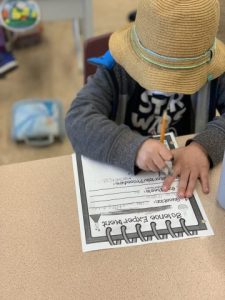
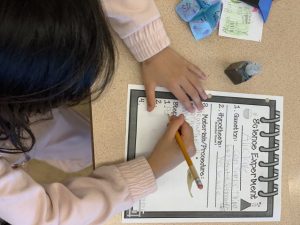
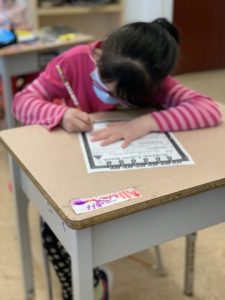
As the students observed the materials of cornstarch and water combine, many quickly came to the realization that we were making OOBLECK! The classroom walls were vibrating from the excitement of the students. Was this gooey slime a liquid or a solid? Or, was it in fact BOTH? Ask your scientist what their conclusion was based on their findings of this experiment.
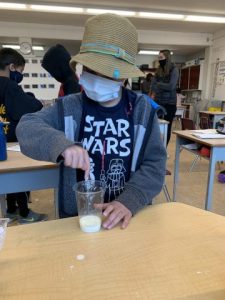
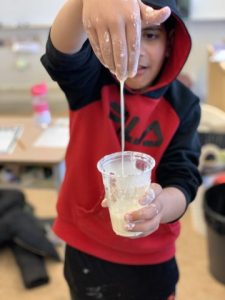
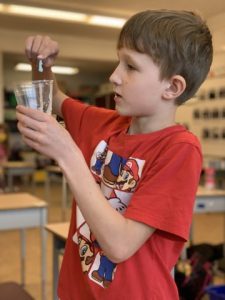
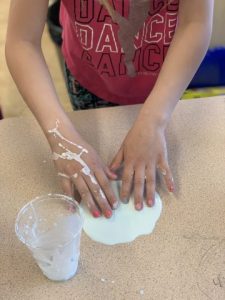
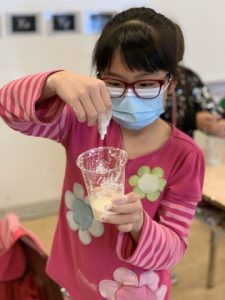
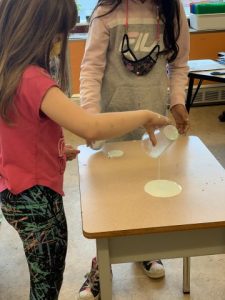
As writers we continue to work on our ability to take our brainstormed ideas, that are recorded in our graphic organizer, and expand upon them by incorporating detail, examples and descriptive language. Moving forward, we will continue to work on being receptive towards feedback during the editing stage to ensure that our writing can be the very best that it can. As good authors, we will ensure that our writing always includes proper punctuation, this includes the use of capitalization at the start of the sentence and a period at the end of the sentence to mark the end of our thought. During the editing stage we are also working on our vocabulary and expanding our word bank. Rather than using the word good, students are encouraged to use a triple-scoop ice cream word that is rich is description, such as fantastic, splendid, terrific, superb, outstanding.. and the list goes on!
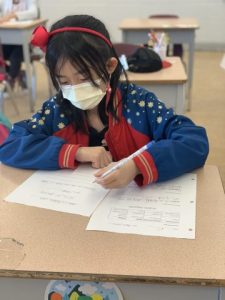
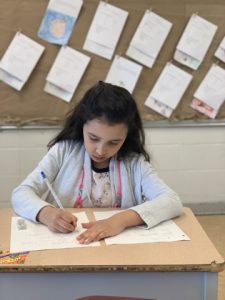
As responsible citizens we continue our discussion about the environment and how we, can make a difference. This week we discussed ways that we can reduce our individual carbon footprint. In connection to our writing we continue to practice our instructional writing by utilizing strong, clear and direct language.
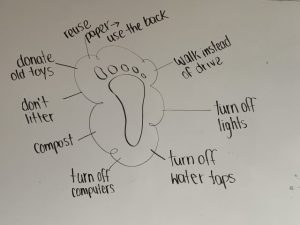
This afternoon we read the story The Two Sisters by E. Pauline Johnson, illustrated by Sandra Butt. This story is an Indigenous, Vancouver legend. Again, we discussed the importance of First Peoples’ oral story telling and how it is an integral part of their culture. The students remembered that story telling is not shared for the purpose of entertainment, so they quickly became engaged with the story to try and decipher the moral, the lesson or the teachings of the story. Throughout the reading, students shared their curiosities, their wonders and their enjoyment for the book. As we neared the end of the story, students came to the realization that this legend is based on a local mountain on the west coast, The Two Sisters, or commonly known as the Lions. As promised to the students, I would not retell the legend behind the creation of the mountains, as they were eager to retell this legend themselves to teach you the history behind it. If students need a little refresher, please find the provided link below, a good historical resource to fall back on.
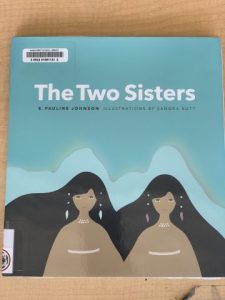


https://www.legendsofvancouver.net/two-sisters-vancouver-bc
A conversation that stemmed from this book was ” was this true?” As the curious learners that we are, I used this opportunity to highlight our Social Studies skills which consists of using our inquiry skills to ask questions, gather, interpret and analyze ideas. It is vital to ask questions to gain more information and to further our learning. Soon, students were building upon other’s ideas and questions, creating a stimulating dialogue. Yes, this is a First Peoples’ legend and traditional belief for many, but does this mean that we all need to believe this legend? We discussed and showed appreciation towards exploring aspects of First Peoples’ oral storytelling as well showing an awareness for how many stories in First Peoples’ cultures connect people to land.
In Math we continue to show our mathematical thinking in various ways, this can be through oral discussion, the use of manipulatives, concrete or pictorial representation. Students are encouraged to explore various modes of representation to illustrate their knowledge and understanding. The grade 2s continue to learn strategies to accurately add and subtract with, and without regrouping. We have primarily been focusing on boxing the ones when looking at at an equation and then carrying the tens to the ten’s place. Grade 3s have just begun their journey with division, and have quickly caught on to the similarities between multiplication and division. Stay tuned to learn more about the mathematical strategies that we will be learning to expand our skill-set to illustrate our mathematical thinking.
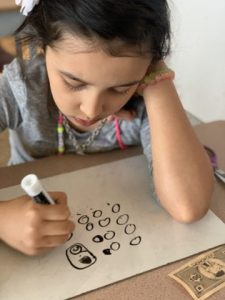
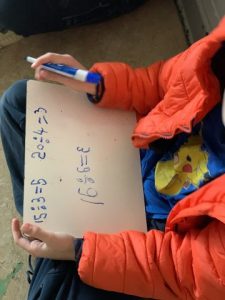
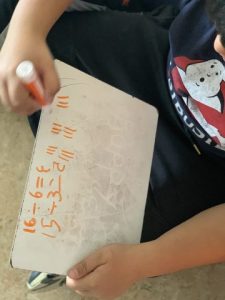
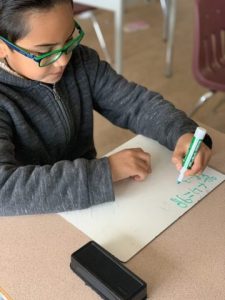
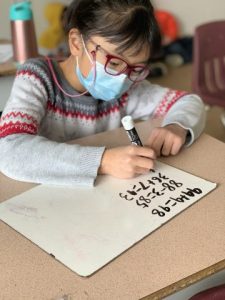
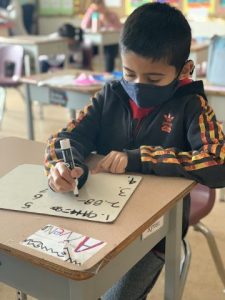
In Physical Education, we continue to learn and practice how to control our bodies in a safe manner while being in a shared space with our peers. During group activities and games, we continuously practice our flexibility (by going with the flow), demonstrating good sportsmanship and monitoring our exertion levels during physical activities.
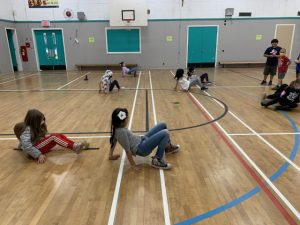
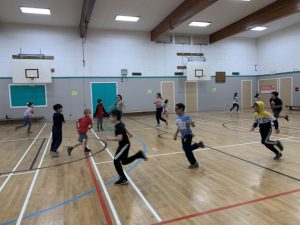
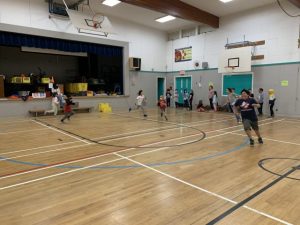
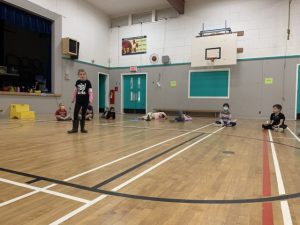
Due to Covid-19 and us being unable to hold our annual student-led conferences that occur typically during the month of May, I encourage you to visit your child’s blogfolio as I strive to update each individual blogfolio with artifacts of your child’s learning and progress. On some posts there will solely be a picture, where as on other artifacts it will be categorized as communicating student learning where I will be providing a written comment. I encourage you to view these artifacts of learning with your child. If you have time, can you and your child reflect on a learning artifact? can your child retell the purpose of the activity? what they learned? etc, if possible, I encourage you to write a written response on their own post.
Thank you in advance for your continued support and involvement in your child’s learning journey.